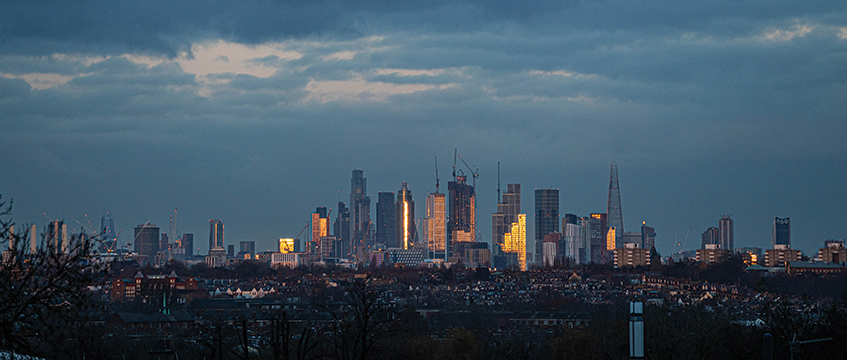US law firms dominate the sector’s 1m sq ft-plus search for office space in London. Now, an industry survey has shone a light on how its bosses want to use that space.
CBRE quizzed top executives at 65 US law firms about their real estate priorities late last year, and published the results last week. Among the topics: setting office attendance requirements, using real estate to reinforce corporate culture, and the ongoing pressure to do more with less when it comes to property.
“The legal workplace is undergoing transformation, as the pandemic accelerated trends that were already on the rise,” CBRE’s report said. “Hybrid work, real estate costs and talent pressures are key evolving factors. The future legal work environment needs to balance flexibility, privacy, collaboration and socialisation to support productivity and relationships. It should be a place where professionals want to spend their time.”
Good but not good enough
CBRE found that the average law firm office attendance surpasses other industries – but still is not high enough for law firm leaders, who want in-office working to pick up further this year.
Almost all firms responding to CBRE’s survey said they have an established hybrid work policy, but only a third have a consistent approach right across the company. For most firms, the agency said, lawyers themselves have the most flexibility to decide which days they spend in the office, while other staff members “follow a routine of preselected days”.
Talent attraction and retention is front of mind for legal leaders weighing new real estate decisions, many arguing that developing a workplace culture cannot be done effectively remotely.
“The majority of law firm leaders agree that remote work offers fewer opportunities to network and socialise, as well as fewer professional opportunities compared to showing up regularly at the office,” CBRE said.
“Additionally, the majority of law firm leaders agree that through the height of remote work their culture held steady, neither strengthening or weakening. National and regional firms have experienced the largest negative impact. Multinational firms have been impacted the least, most likely because there were already tools and practices in place to manage distributed teams prior to the pandemic.”
The agency added: “Many attorneys and professionals have home offices that support focus, comfort and access to technology comparable or preferable to what the office provides. The intangibles, however, such as mentorship, new employee onboarding, developing relationships and collaborating on substantive work are unequivocally better supported in the office.”
Only 17% of law firms told CBRE that they are likely to expand their real estate portfolio, with most trying to accommodate growth within a similar amount of space.
“Most law firms will maintain or moderately reduce their footprint over the next three years,” the agency said, noting that only a “small fraction” expect an increase or reduction greater than 30%.
London calling
For many firms eyeing change – even if small – the UK is a target. American firms are clamouring to secure new outposts in the capital as a destination of choice; 70% of active office requirements in the capital are from the US, and they accounted for three-quarters of take-up last year, according to Knight Frank.
For those without a foothold in the UK, the decision is motivated by a desire to increase international outreach. For firms already familiar with the UK market, specifically those that already have space in the capital, office moves are driven largely by a desire to attract and retain the best and brightest talent.
Landmark deals in 2023 included numerous big US law firm relocations, including Paul Weiss’ deal to take 81,433 sq ft at 20 Air Street, W1, Debevoise & Plimpton taking 67,607 sq ft at the Daily Mail’s former headquarters on Tudor Street, EC4, and Kirkland & Ellis’ deal to prelet 173,597 sq ft at 40 Leadenhall, EC3.
Some firms, such as Mayer Brown (100,000-130,000 sq ft) and Morgan, Lewis & Bockius (70,000-100,000 sq ft), are carrying over requirements from last year, with both looking to set up shop in the City.
At the end of last month, Minneapolis-headquartered firm Faegre Drinker Biddle & Reath signed a 10-year deal to take around 14,534 sq ft on level 18 of Stanhope and Mitsubishi Estate’s 8 Bishopsgate, EC2.
Photo by Amer Ghazzal/Shutterstock
Send feedback to Chanté Bohitige
Send feedback to Tim Burke
Follow Estates Gazette











